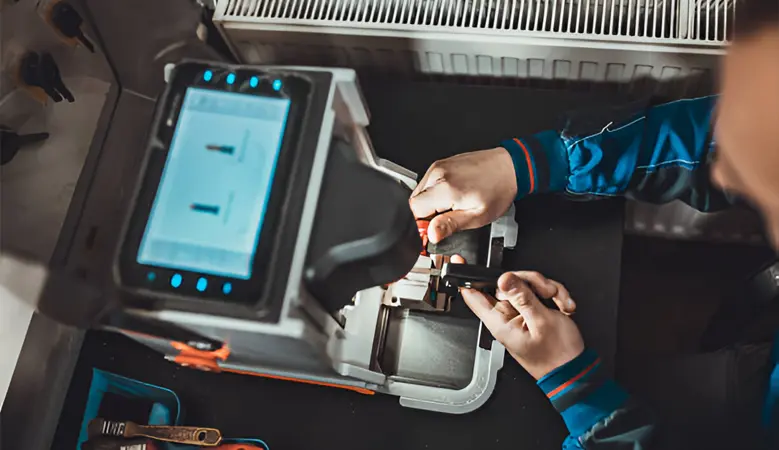A transponder is a technology widely used in various industries for identification, security, and tracking purposes. Essentially, it consists of an electronic device that emits a signal in response to receiving a predetermined signal. A specific trigger, such as a reader device or another transponder, typically initiates this signal, enabling communication and interaction within a system. Transponders are integral to modern technological advancements, offering robust solutions in automotive, aviation, logistics, and beyond sectors.
Introduction to Transponders: Definition and Basics
Transponders are electronic communication tools that transmit and receive signals, facilitating data exchange within a defined network or system. They operate on radio frequency (RF) technology, enabling seamless interaction between various devices and infrastructure. At its core, a transponder consists of a microchip capable of storing and transmitting data, coupled with an antenna for signal reception and emission. These components work in tandem to enable swift and reliable communication, which is essential for applications demanding real-time data exchange and identification.
A transponder functions as a passive or active responder, depending on its design and intended use. Passive transponders derive power from the incoming signal, while active transponders feature an onboard power source for autonomous operation. This versatility allows transponders to cater to diverse operational requirements across different sectors, making them indispensable in today’s interconnected world.
How Transponders Work: Understanding the Technology
The operation of transponders hinges on their ability to receive and transmit signals effectively. When a transponder receives a specific signal, it responds by transmitting its unique identification code or other stored data back to the originating device or system. This process, known as interrogation and response, forms the basis of how transponders interact within their respective environments.
The core technology behind transponders involves encoding and decoding information through radio frequency waves. Pre-programming each transponder with a unique identifier or data set enables its recognition and authentication within a network. This capability is crucial for applications requiring secure access control, asset tracking, or automated identification processes.
Different Industries Use Different Types of Transponders
Various industries deploy transponders in diverse forms to meet specific operational needs. The automotive transponder key is a commonly used type for vehicle security and ignition systems. These car key transponders communicate with a car’s onboard computer to authorize ignition, enhancing vehicle security by preventing unauthorized starting attempts.

Beyond automotive applications, transponders find utility in logistics for tracking shipments and managing inventory. RFID (Radio Frequency Identification) tags, a subtype of transponders, are prevalent in retail for inventory management and anti-theft systems. In aviation, transponders are integral to air traffic control systems, enabling precise aircraft tracking and communication.
Applications of Transponders in Modern Technology
The integration of transponders spans many modern technological applications, each harnessing its capabilities for enhanced efficiency and security. In transportation, transponders streamline toll collection systems, allowing vehicles to pass through checkpoints seamlessly while deducting fees automatically. In healthcare, transponders facilitate patient identification and medical record management, ensuring accurate and efficient healthcare delivery.
Moreover, transponders are pivotal in smart city initiatives, enabling smart infrastructure solutions such as traffic management and public transportation systems. Their ability to provide real-time data and enable automated processes makes transponders indispensable in advancing sustainable urban development and improving quality of life.
Key Components of a Transponder System
A typical transponder system comprises several essential components that enable its functionality and reliability. At the core of every transponder is an integrated circuit (IC) or microchip, where data storage and processing occur. We program this IC with unique identifiers or operational instructions specific to its intended application.
Additionally, a transponder includes an antenna responsible for transmitting and receiving signals. The antenna captures incoming signals from external devices or systems and emits responsive signals containing encoded data. This bidirectional communication capability forms the foundation for seamless interaction and data exchange within transponder-enabled networks.
The benefits of using transponders in security and identification are significant.
Adopting transponders yields significant benefits regarding security enhancement and streamlined identification processes. In automotive security, car key transponders prevent unauthorized vehicle access and theft by requiring a matching signal from the vehicle’s onboard computer. This advanced authentication mechanism enhances vehicle security while offering convenience to authorized users.
Furthermore, transponders enhance operational efficiency in access control systems by enabling rapid and accurate identification of personnel or assets. They facilitate inventory management and asset tracking in industrial settings, minimizing losses and optimizing resource allocation. Integrating transponders in electronic payment systems and smart cards enhances transaction security and user convenience, paving the way for cashless and contactless transactions.
History and Evolution of Transponder Technology
Significant advancements and innovations have marked the evolution of transponder technology, driven by increasing demands for efficiency, security, and connectivity. The concept of transponders dates back to the early 20th century, with developments in radio communication laying the groundwork for their modern applications.
Over the decades, transponder technology has evolved from simple radio frequency identification to sophisticated systems capable of real-time data transmission and encryption. The advent of microelectronics and digital signal processing has enabled miniaturization and enhanced performance, expanding the scope of transponder applications across industries.
Comparison Between Transponders and RFID Tags
Transponders and RFID (Radio Frequency Identification) tags are closely related technologies with overlapping functionalities, yet they differ in operational characteristics and application scope. Both technologies utilize radio frequency waves for communication and data exchange, but their design and functionality cater to distinct operational requirements.
Transponders typically incorporate more advanced features and capabilities than RFID tags, including onboard data processing and autonomous operation. Applications demanding secure access control, vehicle immobilization systems, and asset-tracking solutions requiring real-time data transmission commonly use them.
Challenges and Limitations of Transponder Technology
Despite their numerous advantages, transponders face challenges and limitations affecting their deployment and performance in various environments. One significant challenge is interoperability, as different transponder systems may utilize proprietary protocols or frequencies, hindering seamless integration across diverse platforms.
Security concerns also pose a challenge, particularly when unauthorized parties could intercept or manipulate transponder signals. Ensuring robust encryption and authentication mechanisms is crucial to mitigating these risks and safeguarding sensitive data transmitted by transponders.
The article discusses future trends and innovations in transponder systems.
The future of transponder systems holds promising developments to enhance functionality, efficiency, and security across diverse applications. Advancements in miniaturization and energy efficiency will likely enable the integration of transponders into smaller devices and IoT (Internet of Things) ecosystems, expanding their reach and versatility.
Moreover, adopting advanced encryption techniques and blockchain technology could bolster the security of transponder-enabled systems, ensuring tamper-proof data integrity and authentication. Enhanced data analytics capabilities will enable transponders to deliver actionable insights and support predictive maintenance strategies in industrial and smart city applications.

Conclusion
In conclusion, transponders represent a cornerstone technology underpinning numerous innovations in identification, security, and connectivity across industries. These devices continue to evolve from automotive key transponders to RFID tags used in retail and logistics, offering enhanced functionality and reliability. As technological advancements drive further integration and adoption of transponder systems, their role in shaping the future of smart cities, healthcare, and transportation will remain pivotal.
For reliable transponder services in Dubai, including repair and replacement, contact KME Locksmith Dubai at +971-52-9691456. Whether you need assistance with transponder technology or require services from a trusted transponder repair shop in Dubai, our expert locksmiths are here to help.
